Fantastic Figurines
What Tiny Clay Models Can Tell Us About Korea’s Ancient Past
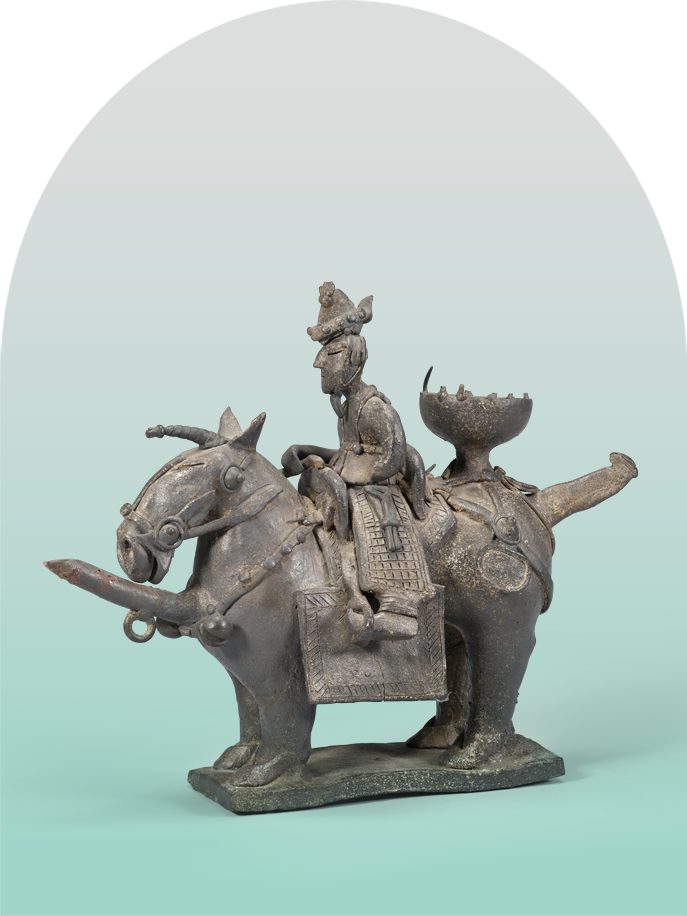
WRITTEN BY
Tim Alper
contributing writer
Photos courtesy of
National Museum of Korea
During the Silla Dynasty (57 BCE - 935 CE), people decorated tombs with 10cm clay figurines. Although the story behind their creation is still a mystery, these remarkable creations provide fascinating insights into what life was really like for ancient Koreans.
May 1926, work was underway on converting some of occupied Korea’s first railway lines from narrow to wide-gauge networks. The process required laborers to collect soil to build a rail depot that would serve the newly constructed Gyeongdong Line. Workers headed to the Hwangnam District of Gyeongju, the former capital of the once-mighty Silla Kingdom (57 BCE to 935 of the Common Era). Here, they found soil suitable for their needs and began to dig. What they found when their shovels broke the earth was an archaeological find like no other.
In land that had sat almost undisturbed for centuries, the workers stumbled across tombs that dated back to the Silla heyday. And possibly most remarkable of the many archaeological discoveries at this site were the scores of clay figurines found in the tombs, tou. What tou offered their finders was a fascinating and unprecedented glimpse into life in the Silla period—a part of Korean history that had been shrouded in mystery since its downfall.
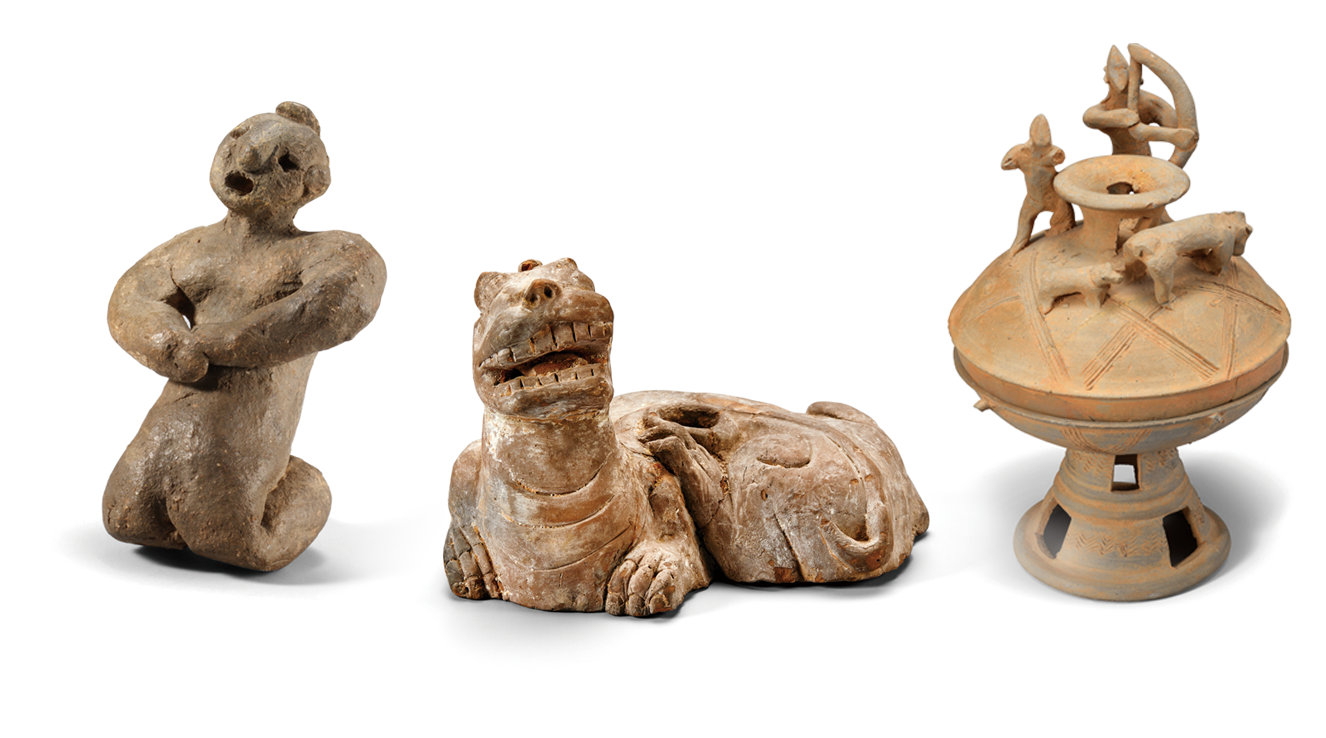
Clues Cast in Clay
Written records from the Silla period are patchy at best. Unlike the Joseon Dynasty (1392-1910), which was highly documented by its ruling class of highly literate scholars, the Silla period left behind precious little for historians to help them draw up a picture of the Silla world.
But these figurines—which range from the mundane to the fantastical—show not only how people acted, dressed and worked, but also how they thought. The Silla period was marked by massive societal and religious upheaval. It was during this time that Buddhism, the religion that would dominate society right up until the Joseon rulers took power, first came to Korea.
During this period, trade and cultural exchange with China was established. But religions native to Korea also thrived. This was a time of animism, ancestor worship—even magic. Much like Ancient Britain under the Romans, religion was often mysterious and varied here. And much like Roman Britain, Silla was a veritable melting pot of people and ideas.
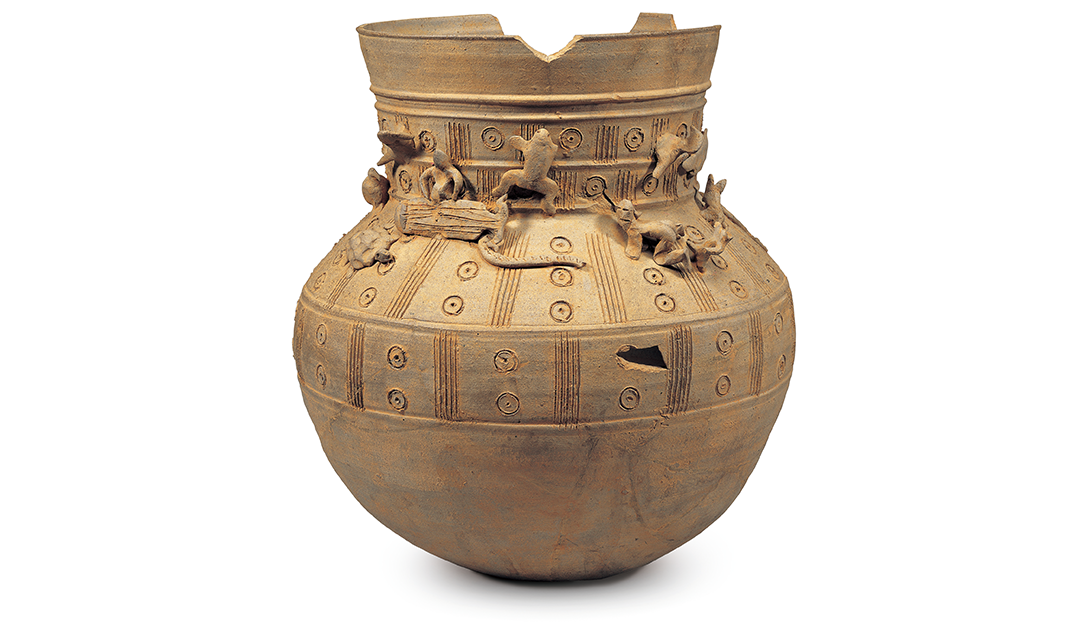
Long-necked jar with tou, designated as a national treasure. © Gyeongju National Museum
While the above-ground Silla remains include Buddhist Temples and golden statues of the Buddha, the tou are wildly different. In many cases, tou are depicted in the throes of passionate coitus, suggesting they may have either been fertility symbols or possibly some form of erotica.
Tou were often shown courting or in the act of love, while some depicted groups of naked men and women with abnormally large genitalia. Such figures were common in animist communities elsewhere in the ancient world, and usually conveyed a wish for their owners to give birth to healthy offspring.
However, many other kinds of tou have also been found. These include a striking representation of what appears to be a warrior or a member of the aristocracy mounted upon what seems to be an armored warhorse. There are also examples of all sorts of animals, ranging from geese to tigers, bears, starfish and monkeys—as well as domesticated animals like pigs, horses, dogs and oxen. The Sillalifestyle, it would appear, was dominated by wildlife and agriculture.
Indeed, some tou were shown at work, moving baskets of crops or seeds around on harnesses attached to their backs. Others are shown marking major events: One collection appears to be depicting a family or community mourning the death of a loved one. Others still are shown playing musical instruments at what looks like a jovial feast or party.
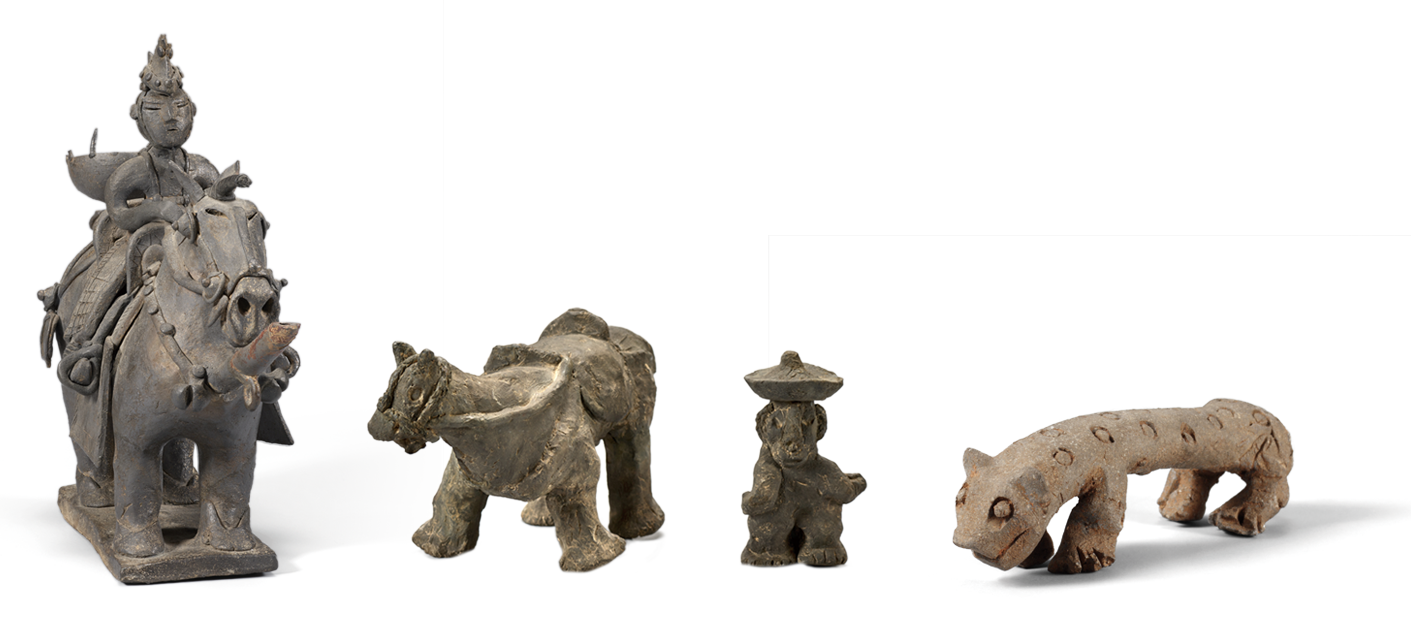
Tou are a valuable cultural heritage that allows a glimpse into the Silla era.
Finding the Figurines
If you have ever been to Gyeongju, you will almost certainly have visited some of the city’s awe-inspiring tombs, such as Cheonmachong Tomb, the interior of which is open to the public. These tombs were carefully excavated by professional archaeologists in the 1970s.
The 1926 discovery was very different. The laborers and investigators had little or no idea what they were digging into, and certainly did not expect to come across such exquisite treasures. As they dug, in many cases, the small tombs—many just 2m long and 70cm wide—began to collapse.
As they saw soil flooding into the tombs, some workers panicked. Not knowing what else to do, they tried to snap photographs or wrench out relics from the tombs before the ground collapsed in on them, crushing their contents.
As such, in many cases, we simply have to rely on the testimony of the 1926 excavators to understand how the people of Silla made use of their figurines. Witnesses at the time said most tou were attached to the necks, lids and pedestals of jars. While many of the tou survived the dig, the pottery they were attached to did not. As such, in many cases, we can only imagine how these figurines were arranged or what kind of vessels they once adorned. One striking model, now housed at the Gyeongju National Museum, has survived more or less intact, however: It shows animals frantically clambering around the side of a jar, almost as if they were trying to get in.
Nobody knows why tou were buried in these small tombs. Perhaps they expressed grieving relatives’ wishes for the deceased to enjoy happiness and joy in the afterlife. Perhaps they were intended to represent highlights from the deceased person’s life. But what is certain is that they provide us with a glimpse behind the curtain of one of Korea’s most interesting—and least-known—historical periods.
Other Articles
-

Special Ⅰ A Factory of the Arts
-

Special Ⅱ A Space that Tells a Tale
-

Trend Old Factories, Young Blood
-
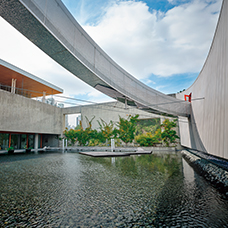
Hidden View Wired World
-

Interview Lee Heemoon
-
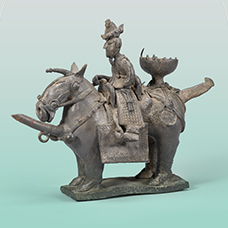
Art of Detail Fantastic Figurines
-

Film & TV Extraordinary Attorney Woo
-

Collaboration Countless Uses
-
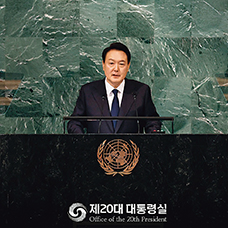
Current Korea Solidarity at a Watershed Moment
-

Global Korea K-indie Music Night in New York
